
Shammy the Dwarf Vet Fund
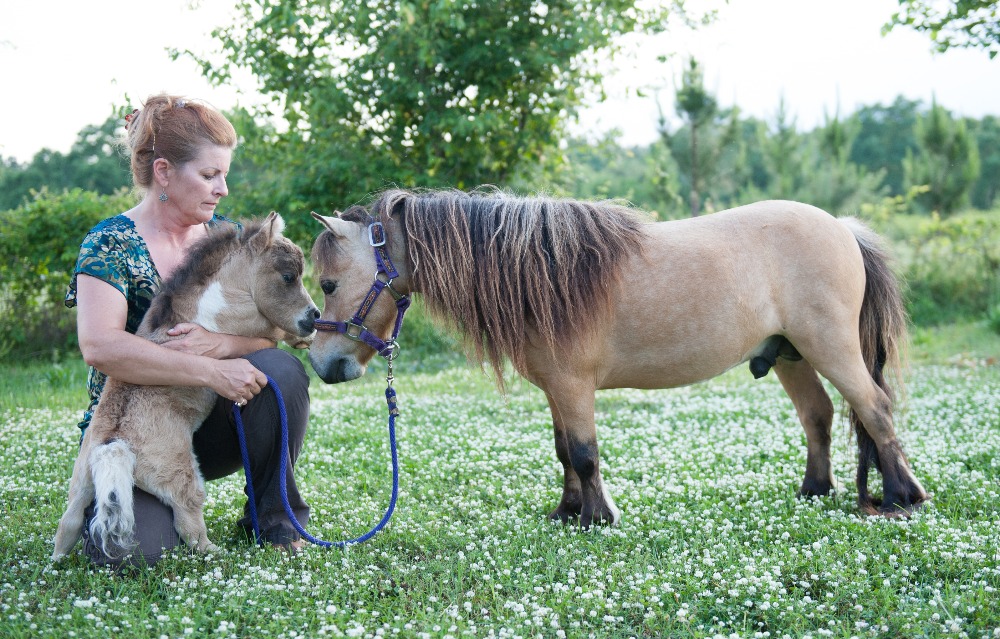 Shammy and daddy, Romeo (3 weeks old)
Shammy and daddy, Romeo (3 weeks old)
FOLLOW SHAMMY ON FACEBOOK!
Shammy is a DWARF miniature horse who stands only 21 inches tall and weighs only 55lbs. He was born in April of 2014. Shammy has the best personality and many have shared that even seeing photos of him can brighten thier mood on the darkest of days!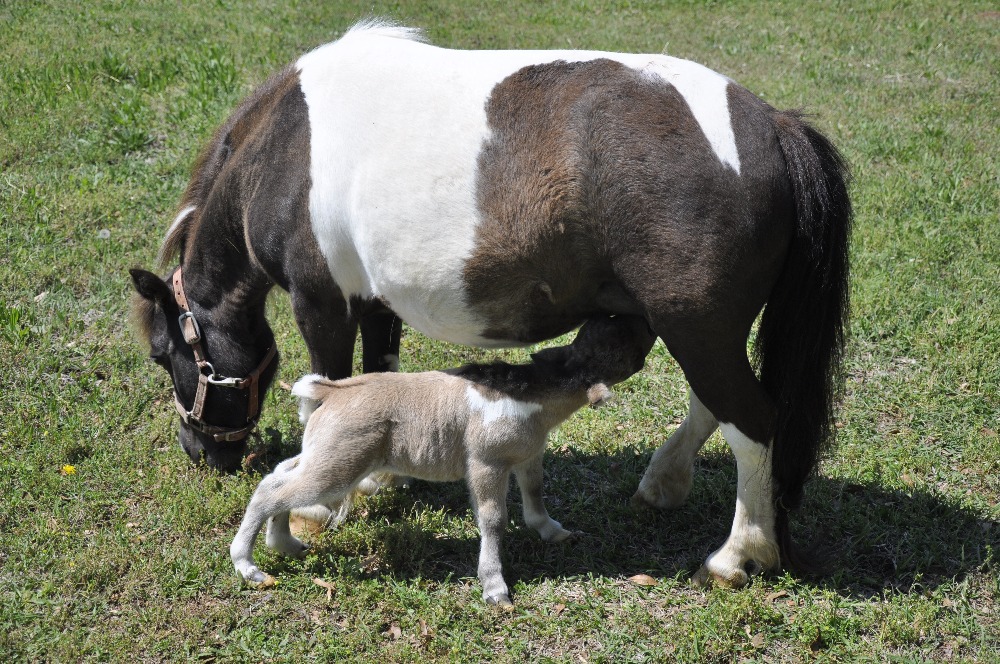 Shammy and mommy, Nikki (1 week old)
Shammy and mommy, Nikki (1 week old)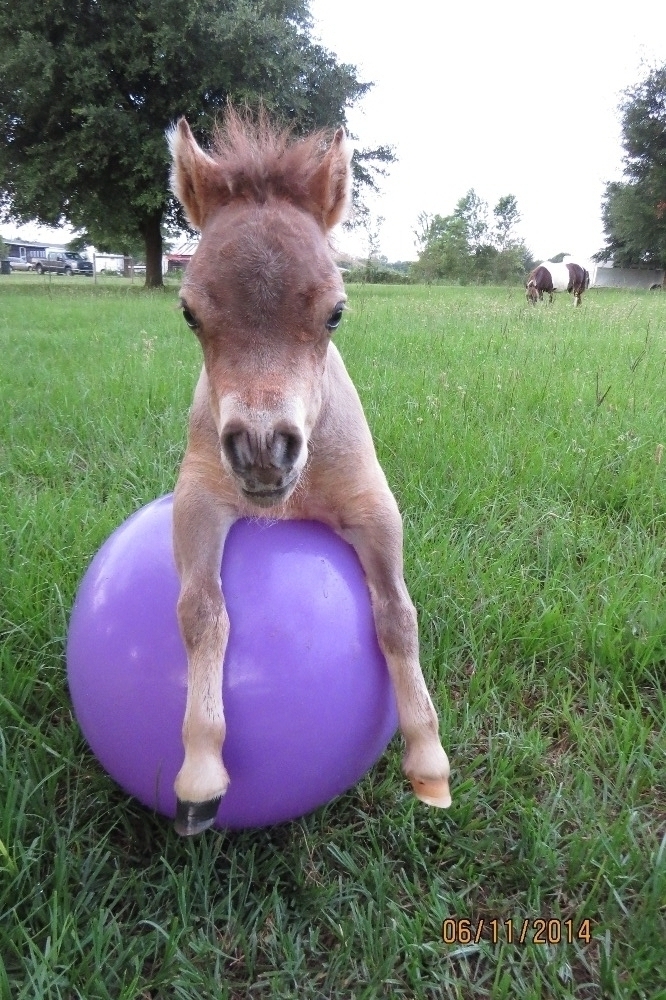 Shammy and his favorite toy (2 months old)
Shammy and his favorite toy (2 months old)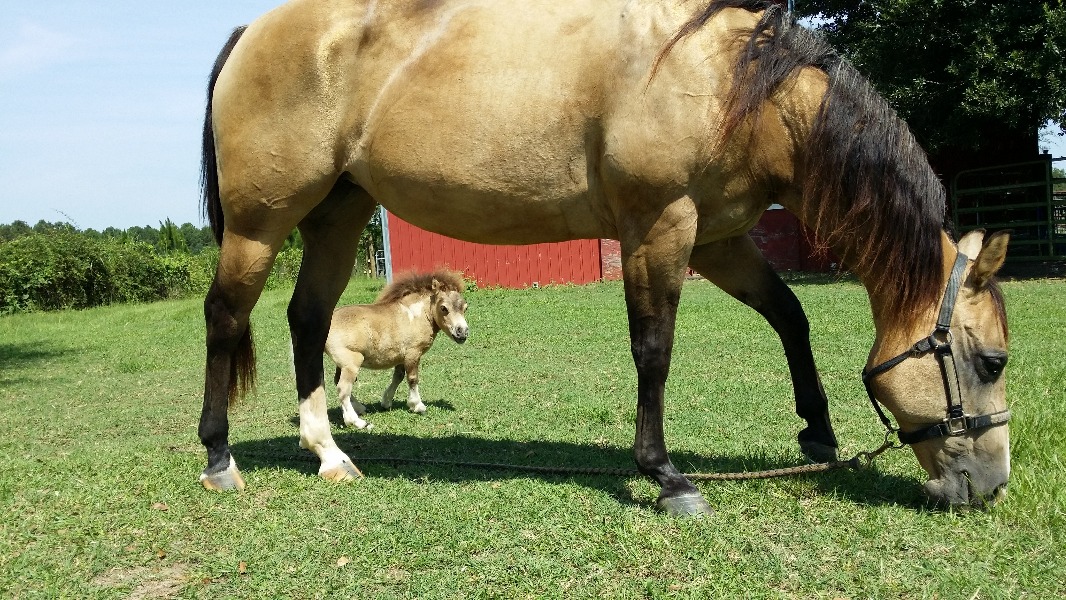 Shammy and his big friend Bodee (3 months old)
Shammy and his big friend Bodee (3 months old)
Although a dwarfism in miniature Shammy makes him a terribly cute pet, Shammy and all dwarf miniature horses will have many medical needs in their lifetime that will be very expensive. Currently Shammy sees a ferrier every 4-6 weeks to have custom horse shoes that must be sized and glued to his hooves in order to prevent him from walking on his ankles (OUCH!).
This is how Shammy walks without corrective shoes.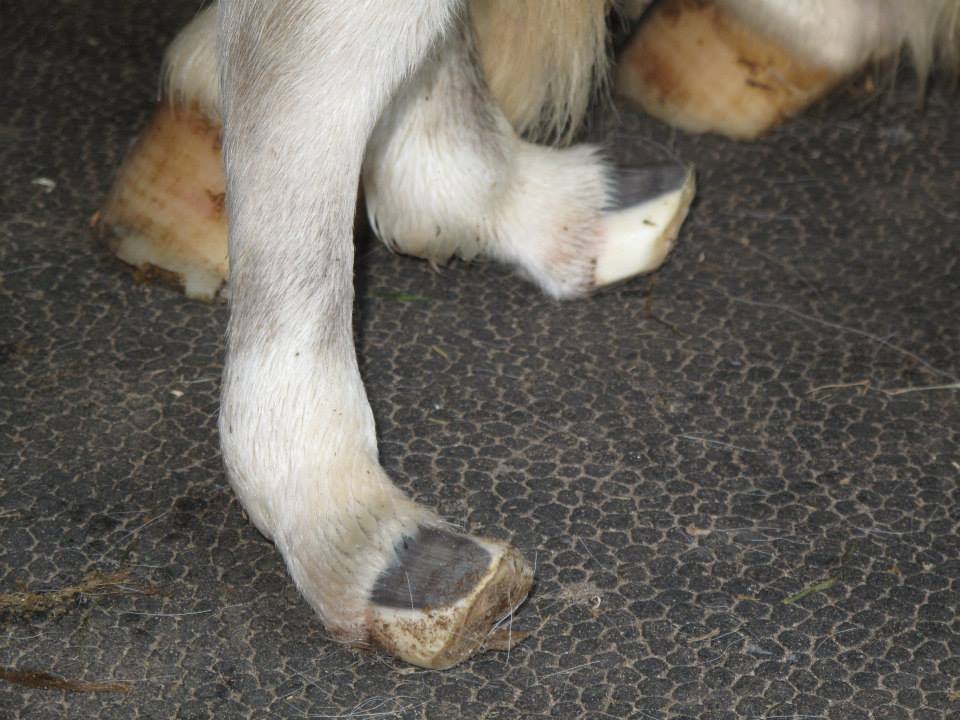
Shammy's first shoes! They were made wide in order to help balance and correct the abnormal curve of his ankles. 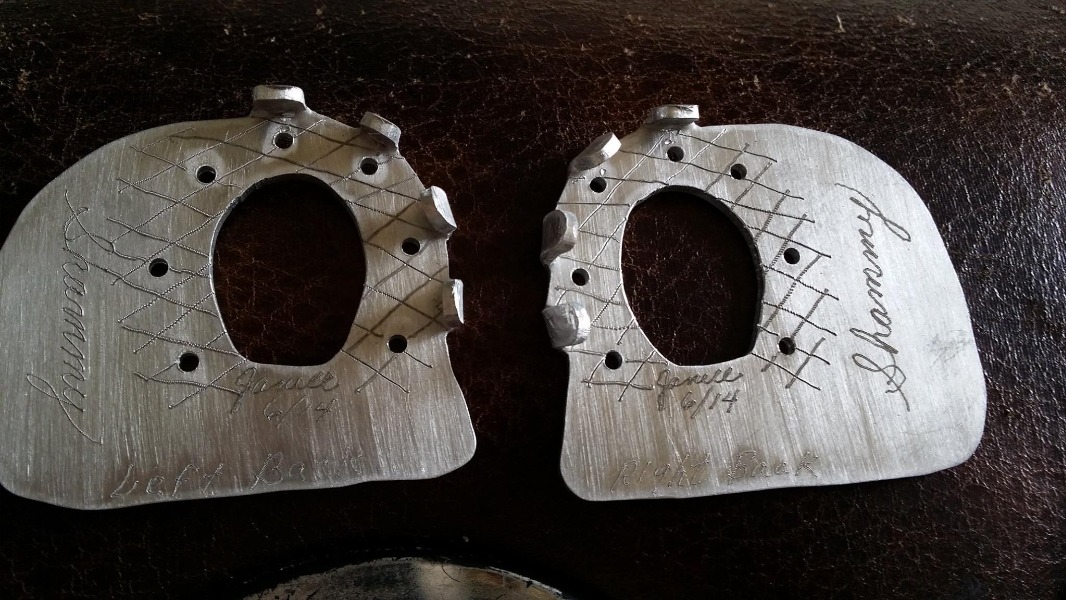
With the help of corrective shoes, Shammy now is able to stand and walk on his feet correctly and have less pain! However, these shoes must be adjusted every month to make sure they are working correctly. 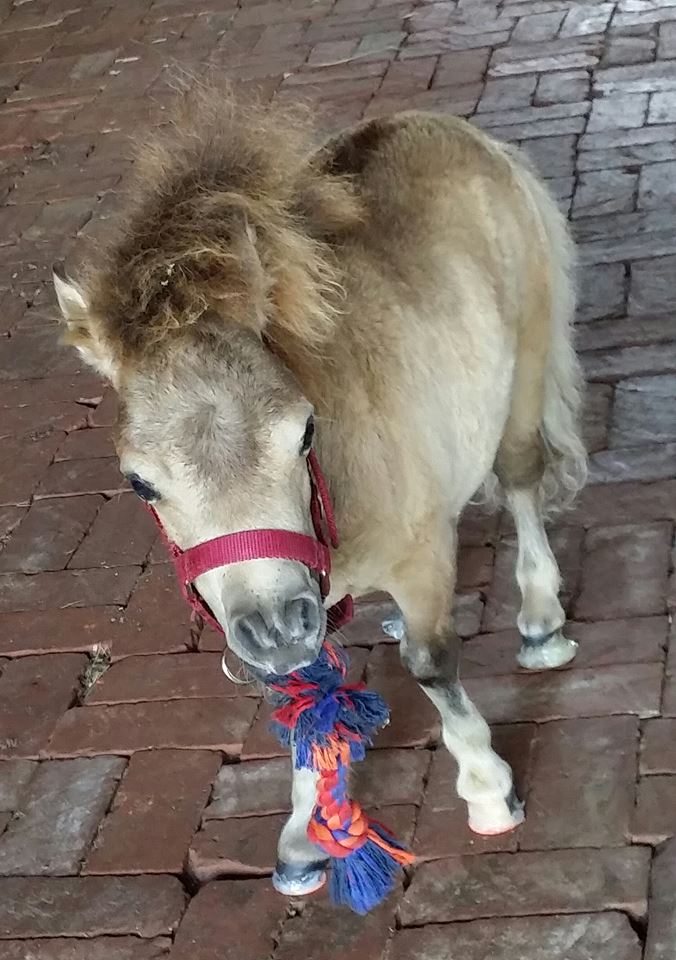
In the very near future Shammy will need multiple dental surgeries. One serious complication of dwarfism in miniature horses is their teeth will grow to be the same size as a regular miniature horse but their jaw and skull tend to stay small and cute. This means that as Shammy's teeth grow, they will run out of room and could cause serious infections, grow up into his sinuses, or make it too painful to eat! Right now Shammy has an underbite, that we just think is so cute, however it is indiciative of needing treatment very soon. 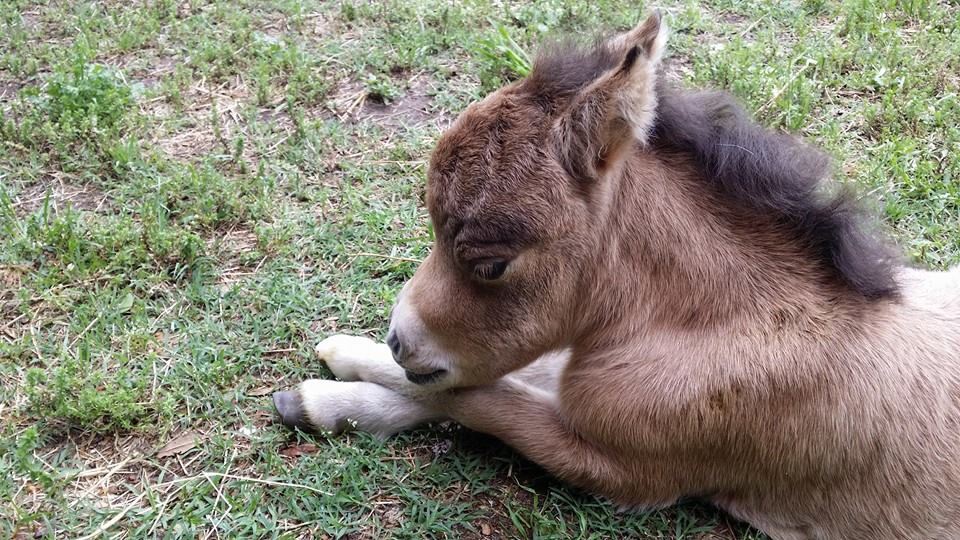 Shammy will need multiple surgical intervientions in order for to have a good quality of life and live without pain. We anticipate medication and injections to treat athritis caused by contracted tendons or tendon laxity. Joint enlargements and joint deviations are common, often becoming progressively serious with age.
Shammy will need multiple surgical intervientions in order for to have a good quality of life and live without pain. We anticipate medication and injections to treat athritis caused by contracted tendons or tendon laxity. Joint enlargements and joint deviations are common, often becoming progressively serious with age.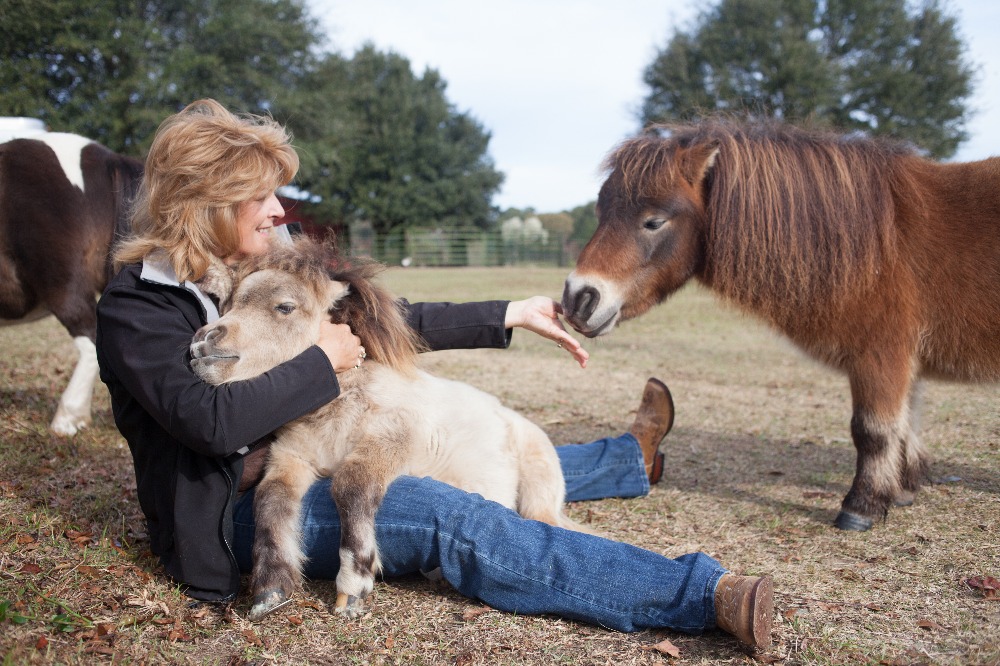 Shammy, friend Peanut, and owner Michele (8mo old)
Shammy, friend Peanut, and owner Michele (8mo old)
The money donated to this account will be managed by Shammy's owner and will be used only towards Shammy's veterinary, ferrier, and environmental needs. Shammy is such a special little horse and has already touched people all over the world with his cute videos and photos that Michele shares on his facebook page. 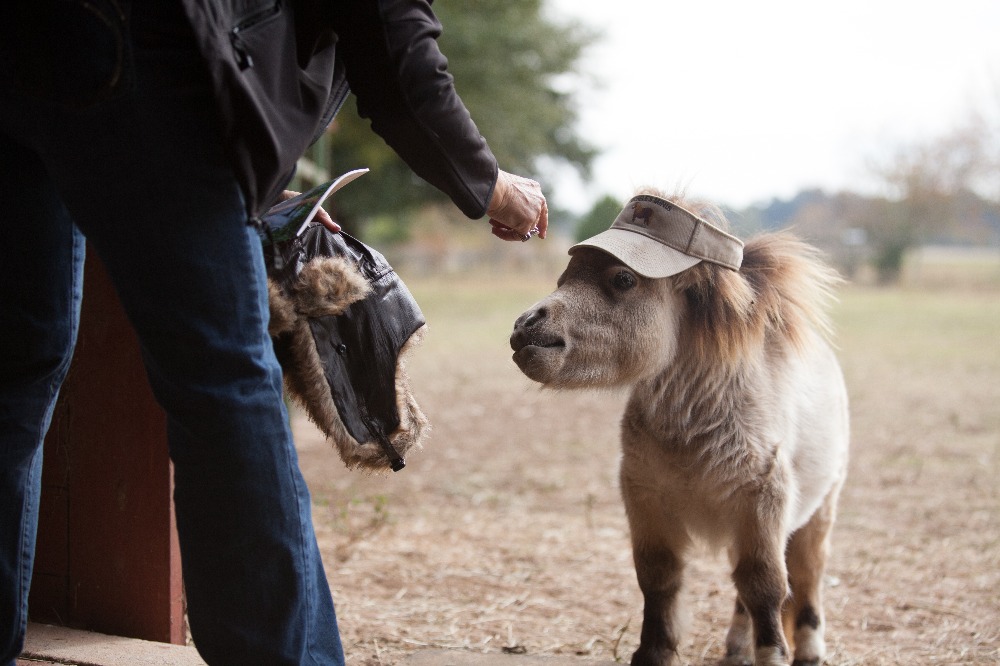 photo copyright Barcroft Media
photo copyright Barcroft Media
Shammy has gotten some media attention recently. Perhaps you have seen Shammy's YouTube Video produced by Barcoft Media. Please know that Shammy and Michele have not recieved any money from this production, and do expect to in the future. 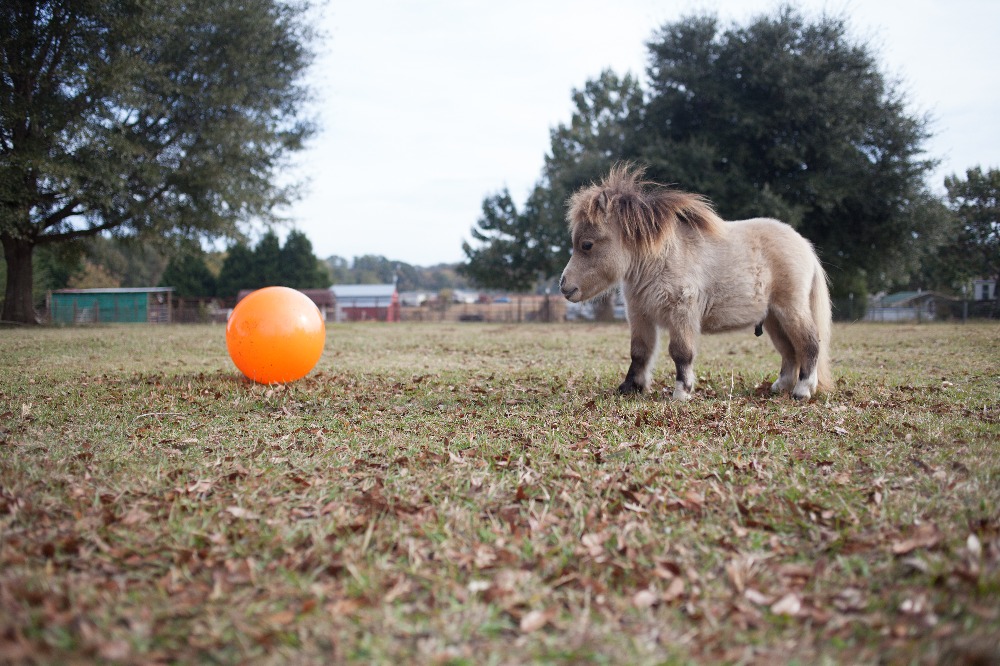 photo copyright of barcroft media.
photo copyright of barcroft media.
About dwarfism in miniature horses:
There is not much information available about dwarfism in miniature horses on the internet, but many people who are active in the minature horse community will tell you that it is a genetic trait that is common among miniature horses.
Dwarf miniature horses are often born with such severe deformities, that the only humane thing to do is to have them euthanized, but most dwarves can live a good life. The life expectancy of a dwarf miniature horse is not nearly as long as a normal Miniature horse. It just depends on the severity of the dwarf characteristics and the medical care the owner is able to provide for the dwarf. All dwarf miniature horses are born different.
Dwarf miniature horse characteristics, as noted by Jenell Jensen, include:
1. Achondroplasia—(legs do not grow in length). Normal bone growth does not occur and often develops unevenly at the joints, causing crooked legs.
2. Dwarf foals are sometimes born with contracted tendons or tendon laxity. Joint enlargements and joint deviations are common, often becoming progressively serious with age. Extreme cow hocks, extremely short gaskins and sever sickle hocks all with varying degree of joint laxity and /or joint weakness are also common. Premature Arthritis is common as well.
3. Some types of dwarfs have an over bite, or an under bite. If an undershot jaw is present, the molars may also be out of alignment, requiring that the teeth be floated more frequently than for a horse with a normal mouth. Highly placed nostrils always accompany the undershot jaw.
4. Brachycephalic dwarfs have a large buldging forehead with an extreme dished face, overly large eyes (sometimes placed at uneven angles) and nostrils placed too high up on the face. A second type of dwarf has a more normally shaped head and eye and longer neck, but its head and body are still oversized when compared to the length of its legs. This second type of dwarf does not usually have an undershot jaw.
5. Head obviously longer than the neck. In some dystrophic dwarfs, the neck appears to come directly out of the shoulders.
6. Girth depth is greater than the leg length. Disproportionately oversized entrails and genitals. That is why so many dwarfs have the big “pot bellies.”
7. Vertebra deviations are common.
8. Often unable to rear or stand on hind legs. Some types have an odd “tilting backward” gait with shoulder higher than the croup.
9. Sometimes associated with the various dwarfism syndromes are less obvious characteristics such as mental retardation, heart and other internal organ defects, sterility, shortened life span, arthritis and inactivity or depression (both of which are probably due to pain).